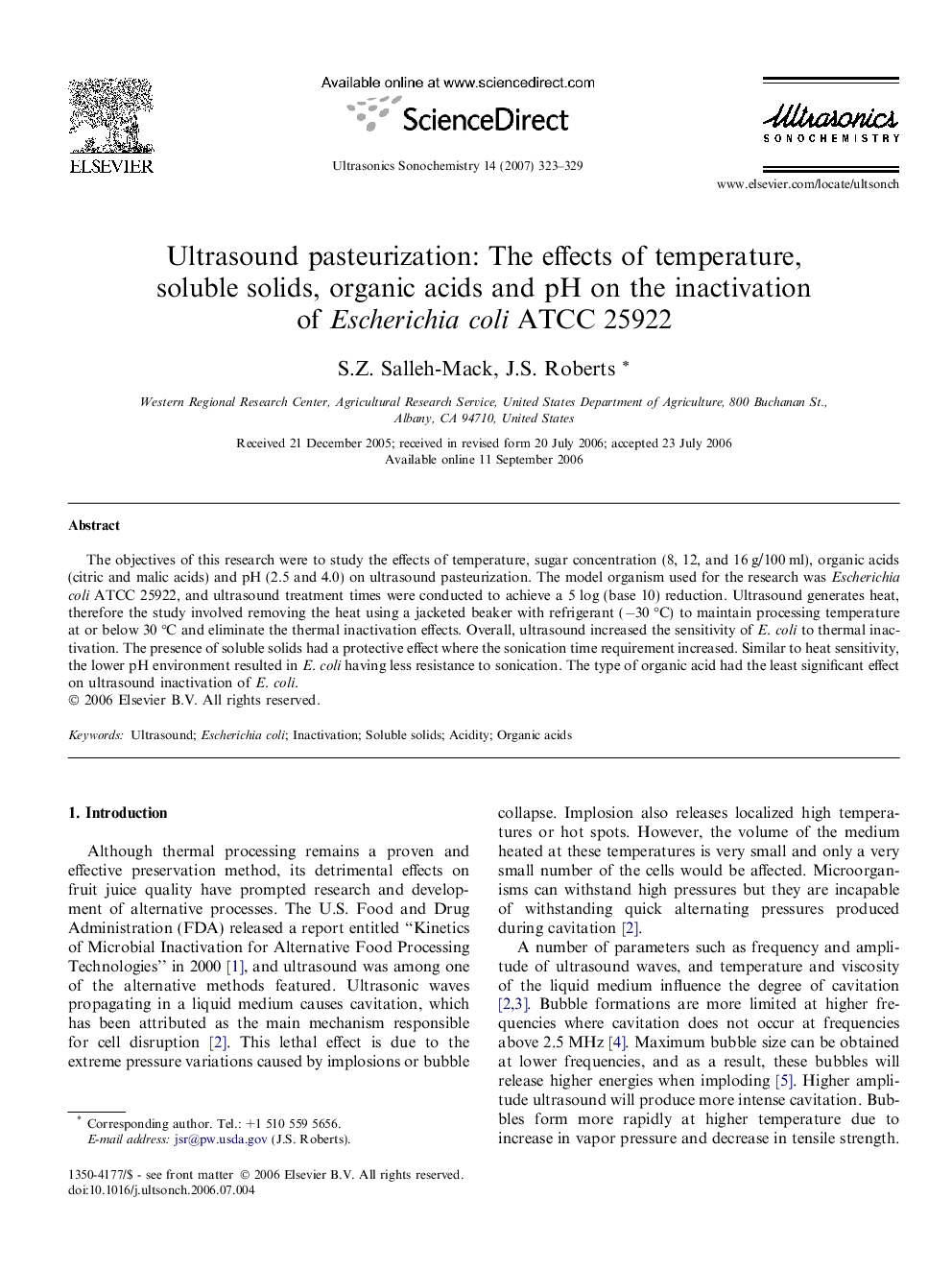| Article ID | Journal | Published Year | Pages | File Type |
|---|---|---|---|---|
| 1266672 | Ultrasonics Sonochemistry | 2007 | 7 Pages |
The objectives of this research were to study the effects of temperature, sugar concentration (8, 12, and 16 g/100 ml), organic acids (citric and malic acids) and pH (2.5 and 4.0) on ultrasound pasteurization. The model organism used for the research was Escherichia coli ATCC 25922, and ultrasound treatment times were conducted to achieve a 5 log (base 10) reduction. Ultrasound generates heat, therefore the study involved removing the heat using a jacketed beaker with refrigerant (−30 °C) to maintain processing temperature at or below 30 °C and eliminate the thermal inactivation effects. Overall, ultrasound increased the sensitivity of E. coli to thermal inactivation. The presence of soluble solids had a protective effect where the sonication time requirement increased. Similar to heat sensitivity, the lower pH environment resulted in E. coli having less resistance to sonication. The type of organic acid had the least significant effect on ultrasound inactivation of E. coli.
